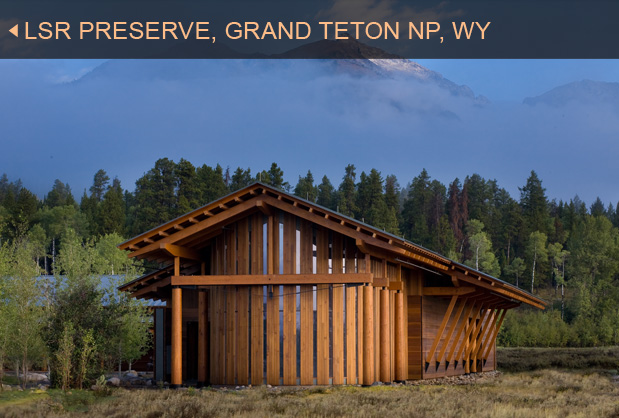FEATURED PARKS AND
RECREATION PROJECTS
RECREATION PROJECTS
Architect: Carney Logan Burke Architects, Jackson Hole, WY | Engineer: M-E Engineers Denver, CO
Parks and Recreation Toilet Systems, Parks and Rec Toilet Systems, Grand Teton National Park, Clivus Multrum Inc.
Grand Teton National Park
Laurance S. Rockefeller Preserve
Jackson Hole, WY
Extraordinary Beauty
In 1932, the Rockefeller family purchased 1,106 acres bordering the southwest corner of Wyoming’s Grand Teton National Park. For nearly 70 years, the Rockefellers enjoyed the craggy mountains, clear waters and wilderness of the land. In 2001, Laurance S. Rockefeller donated the property to the Park. Rockefeller hoped that the natural beauty of the Preserve would revitalize visitors and reinforce the importance of protecting such areas.
The Transition
After the removal of all pre-existing roads, structures and utilities from the property, a new 7,500-square-foot Visitor Center, restrooms and eight miles of hiking trails were built to serve the expected 41,000 annual visitors to the preserve. The buildings were designed by Carney Architects and M-E Engineers, in partnership with the National Park Service, and were built to achieve the U.S. Green Building Council’s highest level of certification—LEED Platinum.
Sustainable Systems
The new Visitor Center uses one small Clivus Multrum Composter with a Foam-flush toilet fixture to serve staff. The three additional restroom buildings, one of which is solar powered, use a total of ten larger Clivus systems and 10 waterless toilets to serve visitors. The Foam-flush fixture requires only six ounces of water and a drop of soap to flush waste down a conventional four-inch drain line. This cuts water used for flushing by over 97%, as compared to conventional 1.6-gpf toilets. The systems also prevent toilet waste from polluting surface and groundwater, instead converting the nutrients in human waste to valuable fertilizers.Other sustainable materials and technologies used in the Visitor Center include recycled denim fabric insulation, energy-efficient lighting such as day-lighting techniques, and native vegetation.
- Foam-flush fixture cuts water use by over 97%
- Dry fixtures eliminate water use


